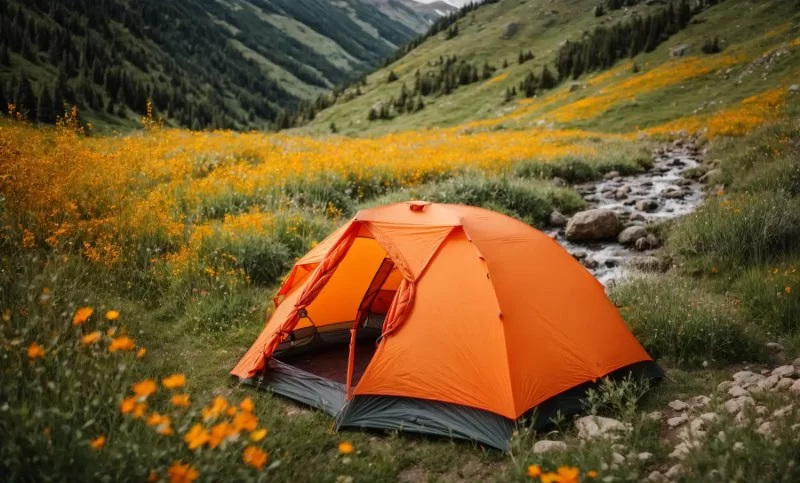- understanding-your-solo-adventure-environment - Understanding Your Solo Adventure Environment
- prioritizing-ventilation-for-warm-weather - Prioritizing Ventilation for Warm Weather Comfort
- lightweight-tents-are-key-for-solo-travel - Lightweight Tents Are Key for Solo Travel
- tent-materials-and-weather-resistance - Tent Materials and Weather Resistance in Summer
- design-matters-size-and-setup-for-one - Design Matters: Size and Setup for One
- real-hiker-stories-and-pro-recommendations - Real Hiker Stories and Pro Recommendations
- gear-tips-from-pine-cliff-resort - Gear Tips from Pine Cliff Resort for Solo Campers
1. Understanding Your Solo Adventure Environment
Before choosing the right backpacking tent for solo warm weather adventures, it’s critical to understand where and how you'll be camping. Are you trekking along the Appalachian Trail, exploring desert canyons in Utah, or enjoying forest trails near Pine Cliff Resort? Each setting brings different demands in terms of airflow, bug protection, and ease of setup.
Warm weather can mean sweltering heat during the day and unexpected rainstorms at night. That’s why the best backpacking tent for solo adventures balances ventilation with light rain protection. Knowing your terrain and climate is the foundation of any smart tent choice.
2. Prioritizing Ventilation for Warm Weather Comfort
Proper ventilation isn't a luxury—it’s a necessity when you're backpacking in hot, humid environments. The right warm weather tent should feature ample mesh panels, cross-breeze-friendly windows, and adjustable flaps. Without these, condensation builds fast and your tent becomes a sauna.
Many solo hikers recommend choosing tents with mesh ceilings and dual-zip vestibules that allow for airflow without compromising insect protection. A popular design tested by summer hikers includes two-way zippers at the top of the door for adjustable venting, which proves invaluable when nights get sticky.
3. Lightweight Tents Are Key for Solo Travel
Weight matters more when you're the only one carrying the gear. Choosing a lightweight backpacking tent for solo adventures can make or break your hiking experience. The best tents for solo warm weather adventures generally weigh under 3 pounds and are compact enough to fit easily inside your pack’s main compartment.
Experienced hikers often favor single-pole or trekking-pole-supported tents for this reason. For instance, ultralight hikers exploring the areas around Pine Cliff Resort recommend hybrid tarp-tents, which offer shade, airflow, and sufficient protection—all at half the weight of a standard tent.
4. Tent Materials and Weather Resistance in Summer
In summer, you're not only dealing with heat—you’re also up against UV damage, occasional storms, and unexpected wind. That’s where material choice becomes essential. Look for ripstop nylon or polyester with UV-resistant coatings. These provide durability without adding too much weight.
Even for summer trips, you should never skip a rainfly. A sudden downpour can turn a good trip into a soggy nightmare. Double-wall tents offer extra protection while keeping the inner tent dry and breathable. Many campers opt for a full mesh inner tent to pair with a light but durable rainfly, creating the perfect solo shelter.
5. Design Matters: Size and Setup for One
It may sound obvious, but many people overestimate how much tent space they need. For solo adventurers, simplicity is key. Choose a one-person tent with enough room to sit up and stretch without adding unnecessary space and weight. A vestibule or small gear alcove is a helpful bonus for keeping your boots or pack protected.
Quick setup is equally important. After a long day of hiking, the last thing you want is a 20-minute puzzle. Freestanding or semi-freestanding models are great for beginners, while experienced campers might lean into stake-supported options for added weight savings.
6. Real Hiker Stories and Pro Recommendations
Emma, a solo backpacker who spent three weeks hiking solo across Banff and Jasper in Canada, swears by her ultralight, double-wall tent. “It handled sudden mountain storms and 85°F heat equally well,” she noted. Her main advice? “Invest in airflow. Mesh matters more than you think.”
Pine Cliff Resort’s outdoor instructors also shared that most first-time solo campers regret choosing tents that are too heavy or complicated to set up. Their advice is consistent: stick to reliable brands known for solo-friendly designs, and always test-pitch your tent before your trip.
7. Gear Tips from Pine Cliff Resort for Solo Campers
As a trusted destination for hikers and solo adventurers, Pine Cliff Resort regularly hosts backpacking clinics focused on lightweight gear selection. Their expert guides recommend:
- Choosing tents with color-coded poles and clips for easy solo setup
- Packing a footprint or groundsheet to protect against unexpected ground moisture
- Opting for tents with interior hooks and storage pockets to organize gear when space is tight
At Pine Cliff Resort, you’ll also find curated selections of solo backpacking tents ideal for warm weather use. Whether you're planning a thru-hike or a weekend escape, their staff can match your needs with the perfect gear setup.







